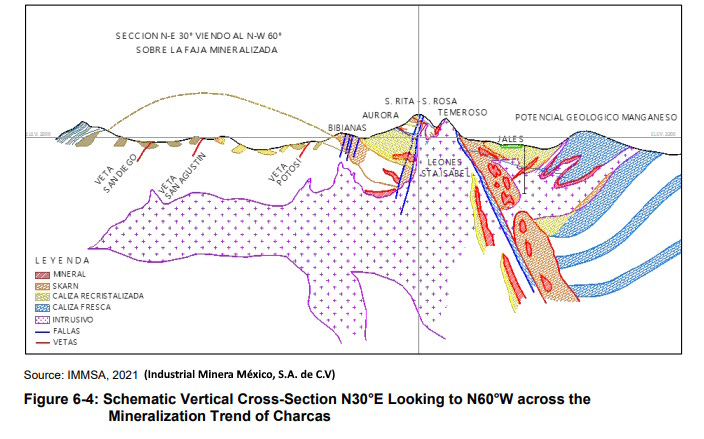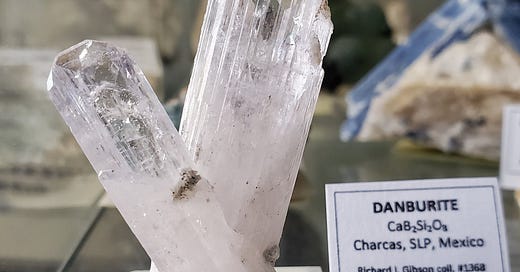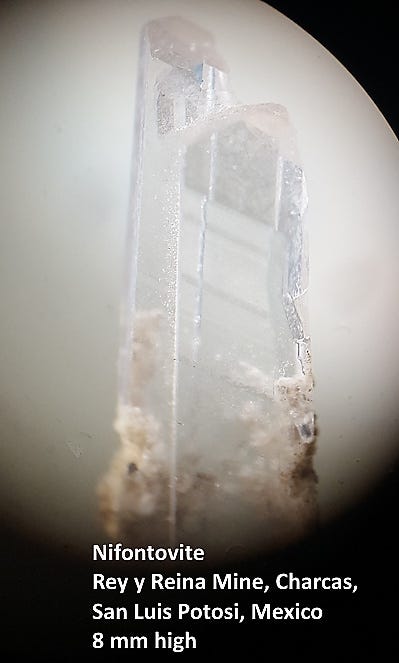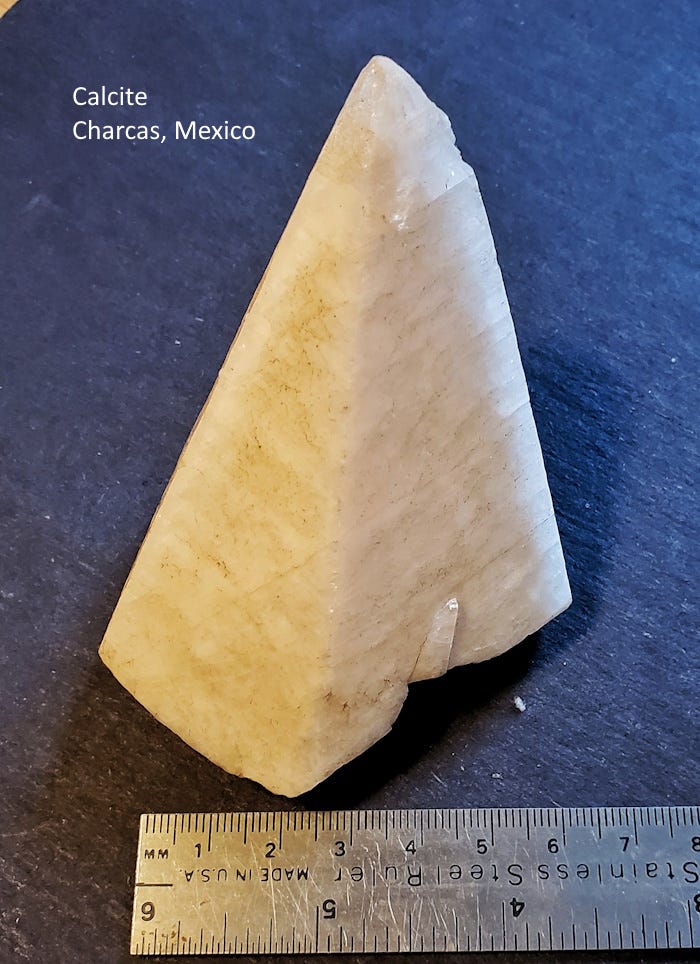Life in the USA is not normal. It feels pointless and trivial to be talking about small looks at the fascinating natural world when the country is being dismantled. But these posts will continue, as a statement of resistance. I hope you continue to enjoy and learn from them. Stand Up For Science!
Danburite, calcium borosilicate, CaB2Si2O8, is superficially similar to quartz – long prismatic crystals, hard, glassy to vitreous, white to colorless. But its crystallography is really different and is evident with anything more than a cursory glance. Danburite is orthorhombic (quartz is trigonal with a usual hexagonal habit) and has three perpendicular but unequal crystal axes, making these crystals something like thick, flattened chisels.
The most familiar borosilicate is probably tourmaline, a group that is a catch-all for calcium, sodium, or potassium with aluminum, iron, lithium, magnesium, manganese, titanium, chromium, vanadium, and other boron silicates. Danburite is pretty simple in comparison, although trace amounts of those other elements are common.
Although it was named for its type locality, Danbury, Massachusetts, my crystals (the tallest is 54 mm long) are from a famous locality at Charcas, San Luis Potosi, Mexico, where the danburite occurs in a skarn, a contact metamorphic rock where chemicals have been introduced into the rock in the process called metasomatism. The skarn at Charcas was mined for gold, silver, copper, lead, and zinc.

According to Levresse and others (2015, Magmatic Evolution of Charcas Zn Distal Skarn: Soc. for Geology Applied to Mineral Deposits, Biennial Meeting Proceedings, Mineral resources in a sustainable world, Nancy, France), the skarns are related to multiple granitic intrusions over a long period of time, especially at 157, 50, 48-45, and 30 million years ago. Those authors indicate that the danburite mineralization developed during the 50-million-years-ago (early Eocene) magmatic activity when the intrusives, apparently related to extensional normal faulting, contacted Cretaceous sedimentary rocks including limestones, the likely sources for the calcium.
The boron and silicon probably came from the granitic magmas, and there must have been a lot of boron, since the danburite is abundant and spectacular. Crystals as long as 15 cm are known, but those in the range of 3 to 8 cm are common. Mine have the very slight pinkish color that is typical.
Charcas is famous for other boron minerals including datolite, CaB(SiO4)(OH), and nifontovite, Ca3B6O6(OH)12(H2O)2. My specimen of nifontovite, above, is a tiny micromount as most of the examples from Charcas are. Nifontovite was named in 1961 for Roman Vladimirovich Nifontov (1901-1960), a Russian mineral exploration geologist; the type locality is in the Central Urals of Russia. Examples are also known from China and Japan, but I think the nifontovite from Charcas is considered the best in the world from a collector standpoint.
Charcas is also well known for diverse well-formed calcite crystals, many of them transparent and gemmy, ranging to opaque like my example above, which is the scalenohedral tip of what would have been a huge crystal. This is actually one of the first mineral specimens I paid for – a whopping 50¢ about 1960, but that was a pretty big investment for a 12-year-old kid. I’m uncertain where I got it, but most likely at some rock shop in the Ozarks of Missouri.
Boron is one of those obscure elements that almost everyone uses every day. One of its biggest uses is as an additive to fiberglass insulation. There, and in borosilicate glass such as that found in oven doors and oven-safe cookware, the boron makes the glass more resistant to heat. Borosilicate in automobile headlamps makes the glass more tolerant of temperature extremes, both cold and hot. Ceramics also exploit that property of boron. Its familiar use as a detergent and soap (borax is hydrous sodium borate) is volumetrically tiny compared to glass and ceramics.
Boron is also used in cellulose insulation as a fire retardant, and boron-based organic compounds improve performance in gasoline. The world leader in boron production is Turkey, but this is one of the few commodities for which the US is actually self-sufficient and a net exporter. China, India, Canada, Indonesia, and Mexico, in decreasing order of tonnage, were the countries that imported the largest quantities of refined borates from the United States in 2024, according to the US Geological Survey. Most production comes from southern California, around Searles Lake and the town of Boron.
The element boron was discovered in 1808 by French chemists Joseph-Louis Gay-Lussac and Louis-Jacques Thénard and independently by English chemist Sir Humphry Davy. Its name is from Arabic بورق 'buraq', which was the word for borax.






